
In the latest edition of Second Serve, our weekly snapshot of the tours, BBC tennis reporter Jonathan Jurejko analyses Jack Draper's improved clay-court game.
Another inquest into the lack of British clay-court success opened at last year's French Open.
For the third time this century, the British singles players suffered a first-round wipeout at Roland Garros and led to many fans questioning - again - why the nation has struggled to produce players who win regularly on the red dirt.
Jack Draper was among the beaten Britons after an error-strewn defeat by Dutch qualifier Jesper de Jong.
Fast forward almost a year and Draper is now a clay-court ATP Masters finalist.
The British men's number one enjoyed a productive run at the Madrid Open before losing an intense three-set battle against two-time French Open runner-up Casper Ruud.
"There isn't a surface in my mind that Jack can't play on," former British number one Tim Henman told BBC Sport last month.
"When you look at his attributes – he's got a big, lefty serve, he hits his forehand with a lot of spin and power - they work on any surface, certainly on clay."
Despite his previous lack of success, Draper always felt he could challenge - providing he was primed physically.
More matches in the tank have been key for a player who has often been hampered by fitness issues.
The 23-year-old has gained greater belief in his body after coming through a series of gruelling five-set matches at the Australian Open in January.
Employing physio Shane Annun and fitness trainer Matt Little - who were both long-term members of Andy Murray’s team - has benefitted him.
"I went from thinking that I was weak and like I wasn't going to be able to carry on, to then feeling 'wow, I'm actually pretty strong'," Draper said.
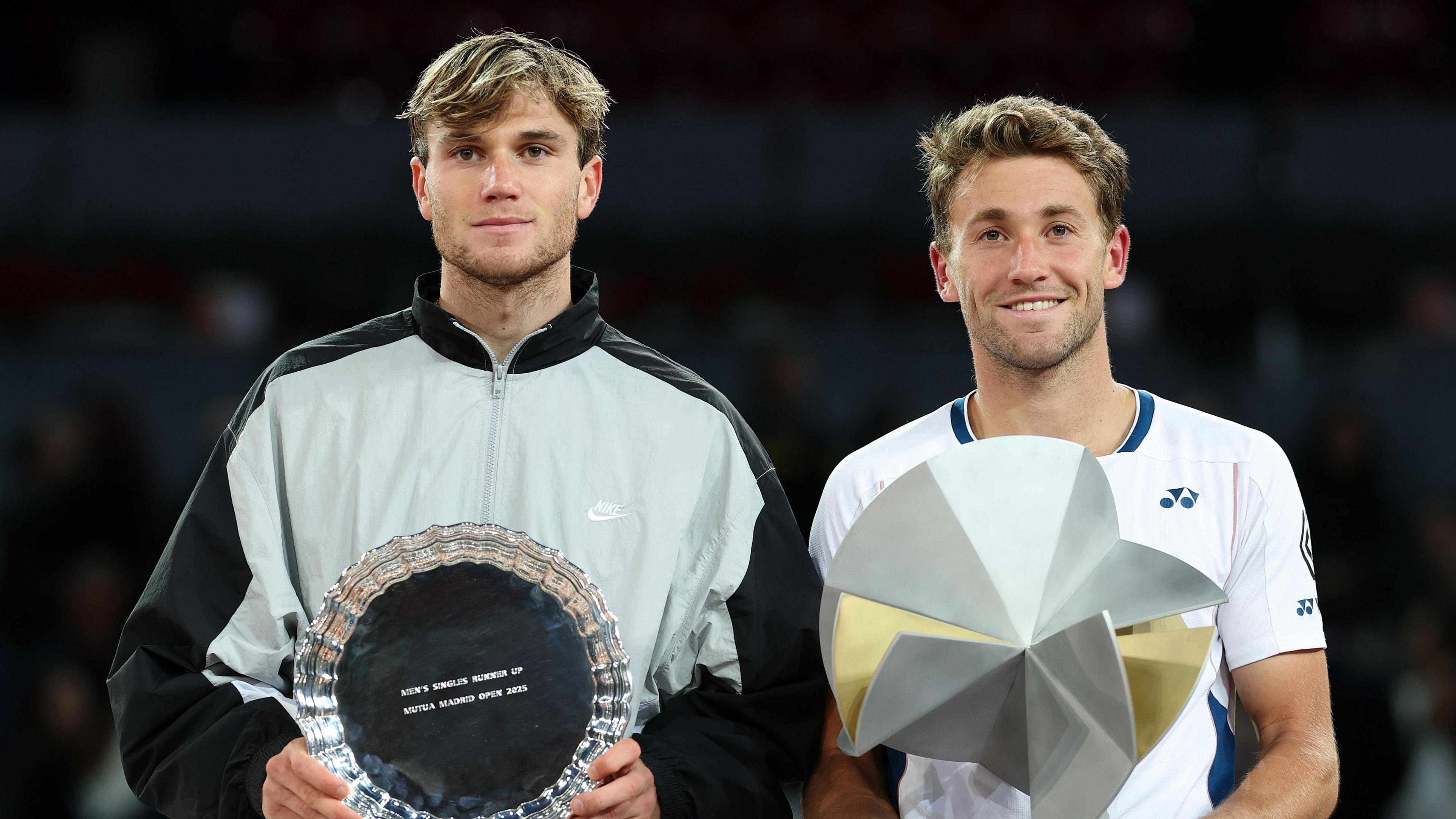 Image source, Getty Images
Image source, Getty Images
Draper (left) lost 7-5 3-6 6-4 to Ruud in Sunday's Madrid Open final
This was illustrated during Draper's semi-final against Lorenzo Musetti in Madrid.
The Briton seemed to be fading in the second set and battled to hang on to his serve - then found another gear in a tie-break to increase his intensity and secure victory.
Clay is seen as the most physically demanding surface because its slower speed leads to longer points and more brutal contests.
It's not the most natural surface for Draper. He has worked hard on his movement and the ability to slide across the dirt.
Being more mobile means he can get in the right positions to execute his most potent weapons.
Draper's serve - both in terms of power and variety - allows him to start points strongly, but it was his forehand that really caught the eye in Madrid.
The topspin and speed wowed fans at the Caja Magica, even drawing a few comparisons to Rafael Nadal - the recently retired 'King of Clay' who won a record 14 French Open titles.
Nobody is suggested Draper will have that level of success, of course, but like Nadal he has been using the pace and bounce of his forehand to trouble opponents.
"My forehand's come into own on all surfaces but this year on the clay it's really doing a lot of damage," said Draper.
"I'm trying to base my game around that and my serve, and getting more and more efficient."
In Madrid, Draper also found the right blend between defence and attack, while using the drop shot at the right time was also an effective tool.
Despite all the positive signs, it is telling that Draper - like all great players who harbour ambitions of winning Grand Slam titles - has an insatiable appetite for further improvement.
In his post-final news conference in Madrid, he highlighted his serve, net play and physicality as the areas he needed to particularly work on.
"I'm nowhere near where I want to be," Draper said.
"There are plenty of things that are going to keep on improving and I'm going to keep on getting better and better. I believe that."

The uncertainty around Novak Djokovic continues. The 24-time Grand Slam champion pulled out of the Italian Open after an early exit in Madrid and looks unlikely to play again before the French Open.
The Madrid Open was plunged into chaos when a power outage swept across Spain. It led to candlelit meals, no showers after matches and long walks home for players.

Draper has made the most notable move in the ATP rankings, climbing to a new career high of fifth in the world.
He is only the fourth Briton - after Tim Henman, Greg Rusedski and Andy Murray - to break into the men's top five.
Norway's Ruud regained his place in the top 10 by winning the Madrid final, with Italy's Musetti joining him there for the first time in his career.
Former world number one Daniil Medvedev dropped out of the top 10 for only the fourth week since July 2019, while Canada's Gabriel Diallo jumped 24 places to 54th after reaching the Madrid quarters.
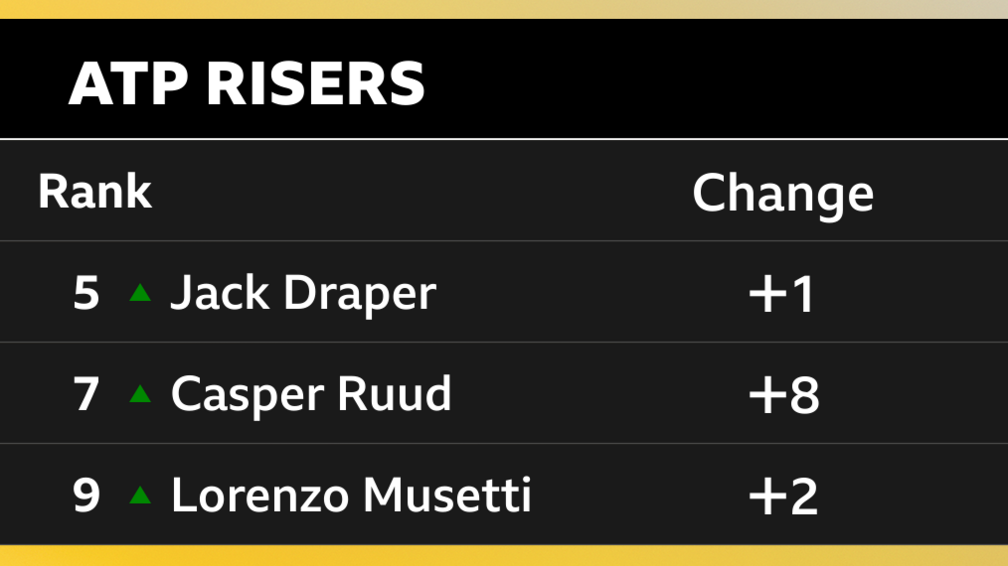
In the WTA rankings, Sabalenka's title win helped her open up a whopping 4,345-point gap over Polish world number two Iga Swiatek.
Coco Gauff, who lost to Sabalenka in Saturday's final, moved back to third spot above American compatriot Jessica Pegula.
Former world number one Naomi Osaka is back inside the top 50, having dropped down a level to win a WTA Challenger event in France.
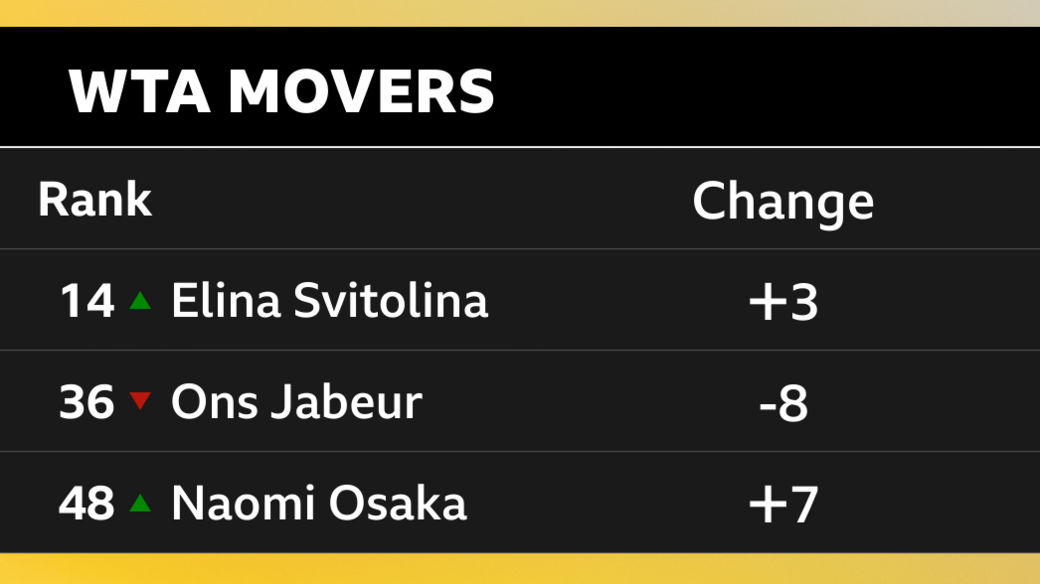

Both tours are heading to Rome for another combined ATP and WTA clay-court event played over a fortnight.
The focus of attention will be Jannik Sinner, who returns from his three-month ban for twice failing doping tests.
The Italian world number one will be granted a hero's welcome by the home fans. But what about in the locker room?
The story around Sinner's comeback is analysed here.

Draper was the only British singles player in Tour-level action at the weekend, with Jacob Fearnley and Cameron Norrie going out of the Madrid last 16 on Tuesday.
Katie Boulter, Emma Raducanu and Sonay Kartal - the top three British women - returned to the National Tennis Centre after losing in Madrid last week.
The trio continued to practice on the clay courts before heading out to Rome, where they each have direct entry into the main draw.
Norrie must go through qualifying, along with Billy Harris and Harriet Dart.
What is Second Serve?
With so many professional tennis tournaments taking place across the world, and across so many levels, it can be hard to keep up with everything from one week to the next.
As part of BBC Sport's commitment to offer more for tennis fans, Second Serve will be your weekly round-up of the biggest stories in the sport.
As well as the main talking point, you can see which ATP and WTA players are making significant progress - or struggling for form, how the British contingent are doing and what the next stops on the calendars are.
You can also sign up to get the latest tennis news from BBC Sport delivered straight to your mobile phone.
.png)
 7 months ago
25
7 months ago
25
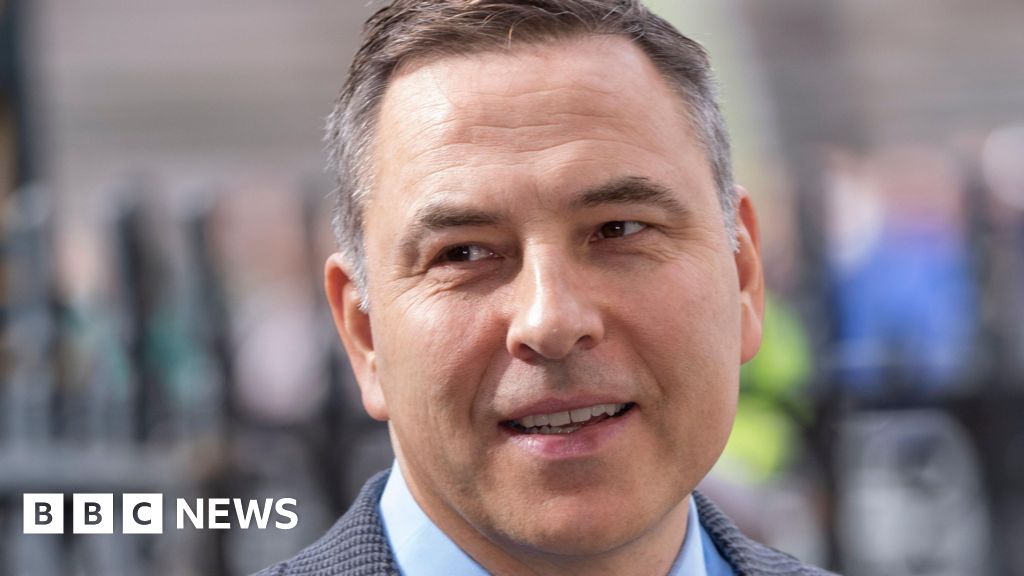





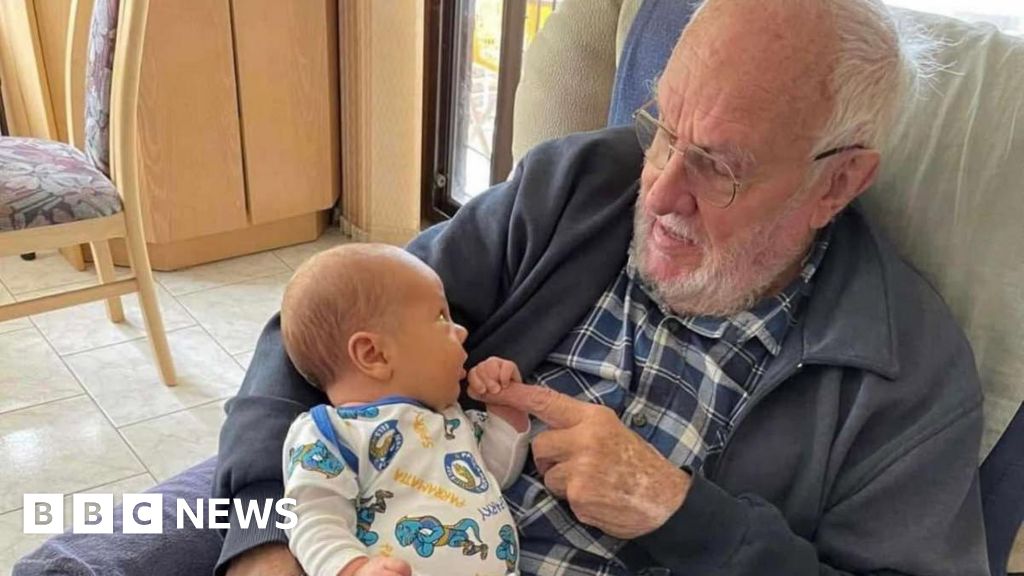

 English (US) ·
English (US) ·